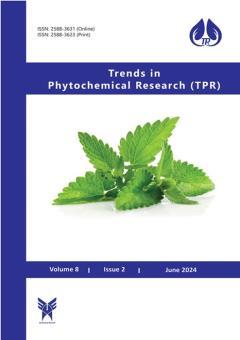-
-
-
Open Access Article
1 - A systematic review on the ethnobotany, essential oils, bioactive compounds, and biological activities of Tanacetum species
Majid Mohammadhosseini Magdalena Jeszka-Skowron -
Open Access Article
2 - Chemical composition of the essential oils from the aerial parts of Malva neglecta Wallr. from Khorramabad, Lorestan Province, Iran using solvent free microwave extraction (SFME) method
Majid Mohammadhosseini -
Open Access Article
3 - The genus Micromeria Benth.: An overview on ethnobotany, chemotaxonomy and phytochemistry
Majid Mohammadhosseini Alessandro Venditti Guido Flamini Satyajit Sarker Mohammadreza Kalaee
List of Articles Majid Mohammadhosseini
-
The rights to this website are owned by the Raimag Press Management System.
Copyright © 2021-2024


